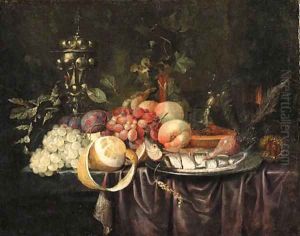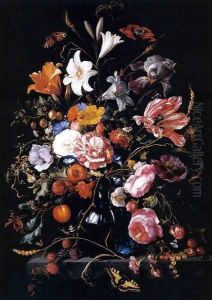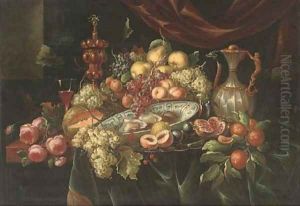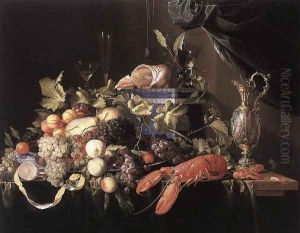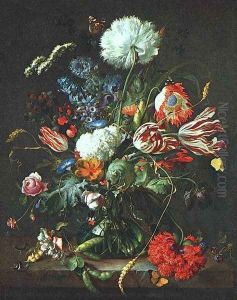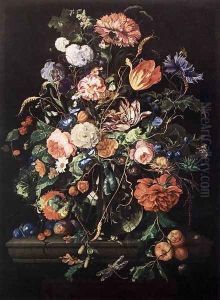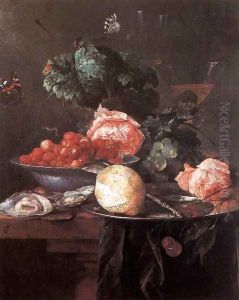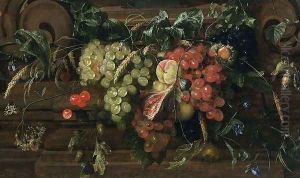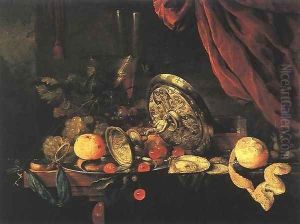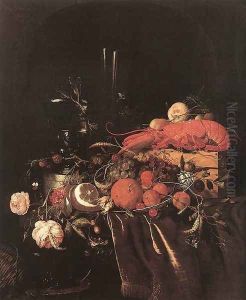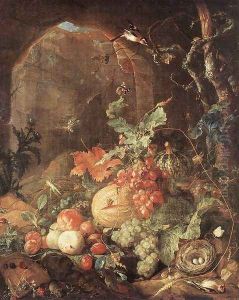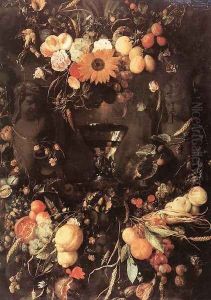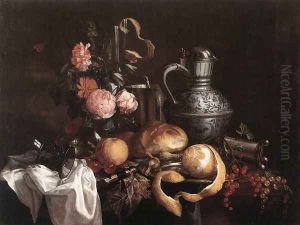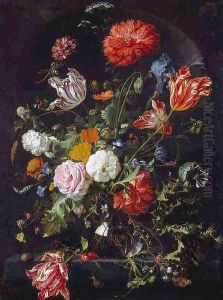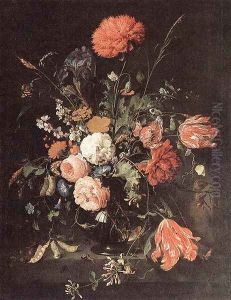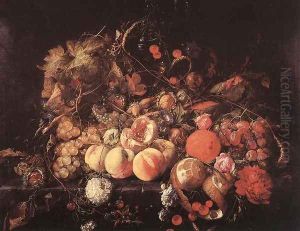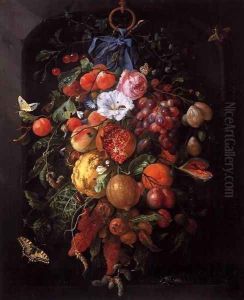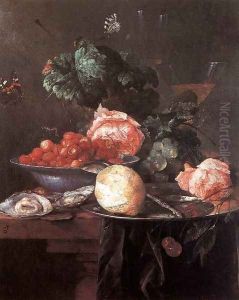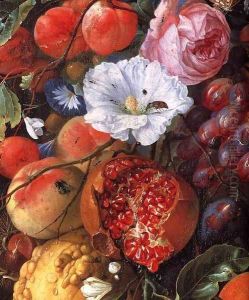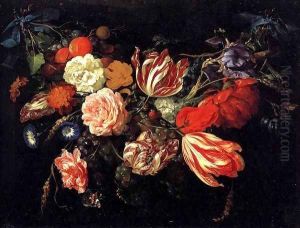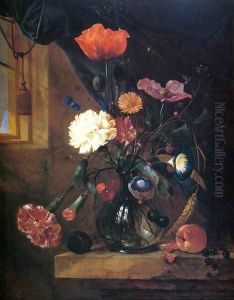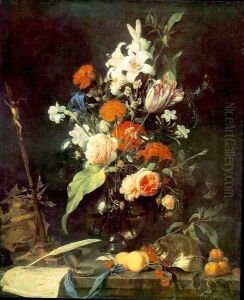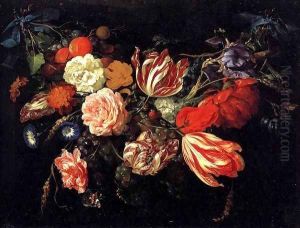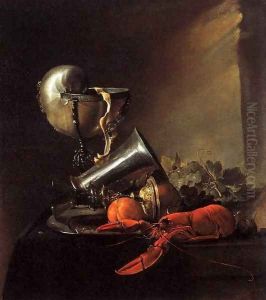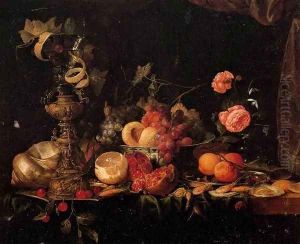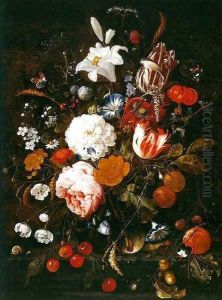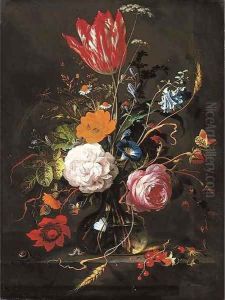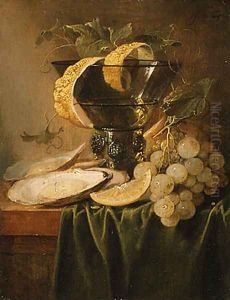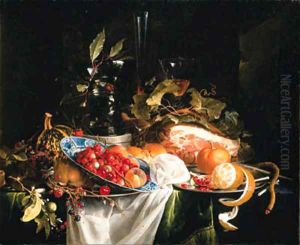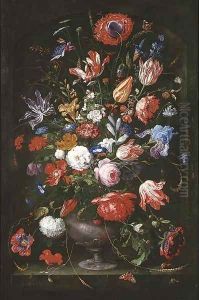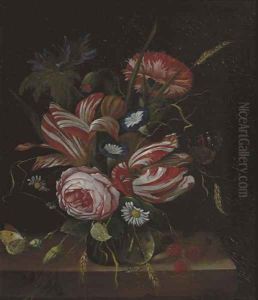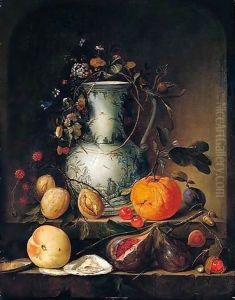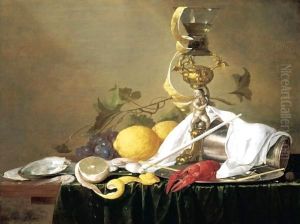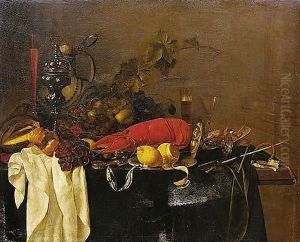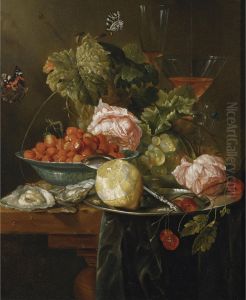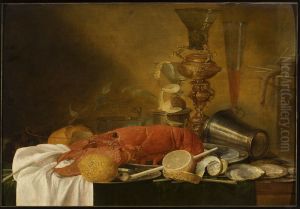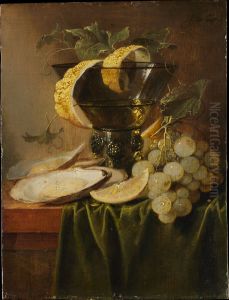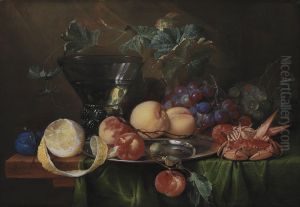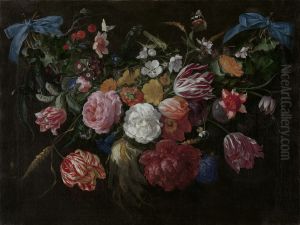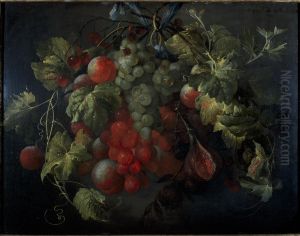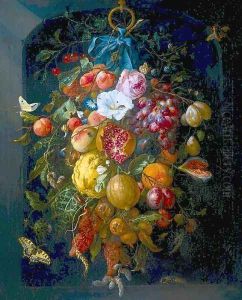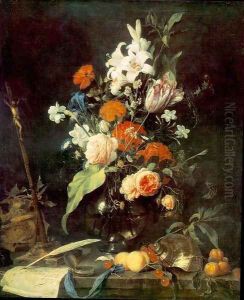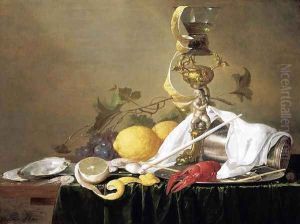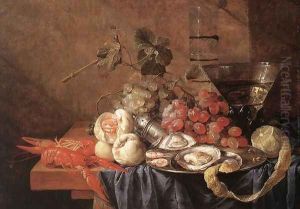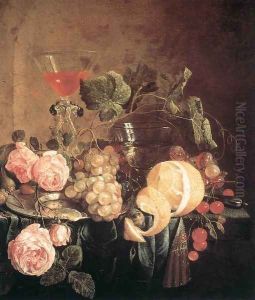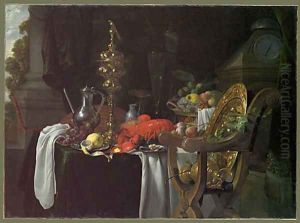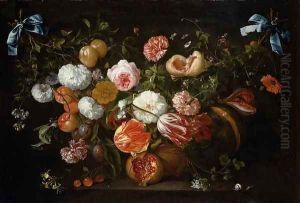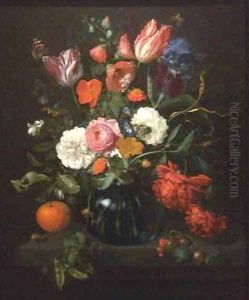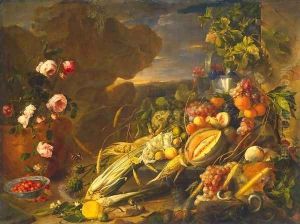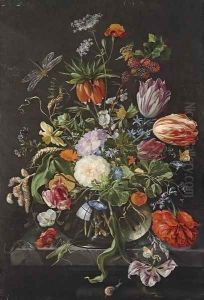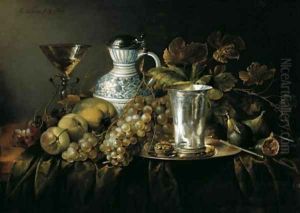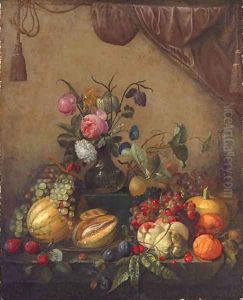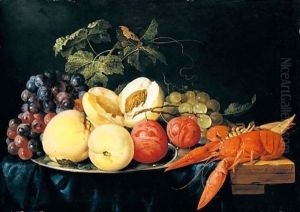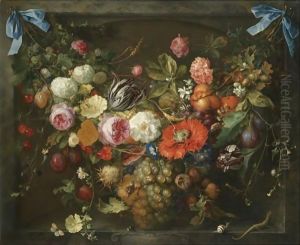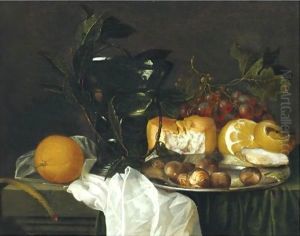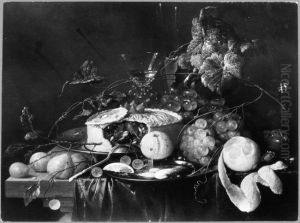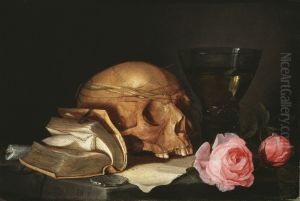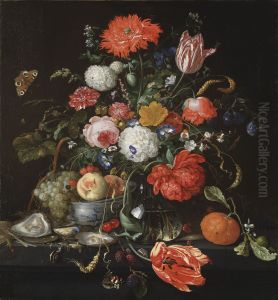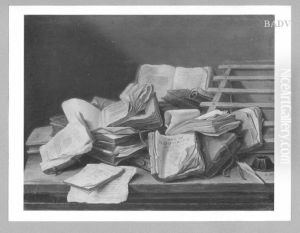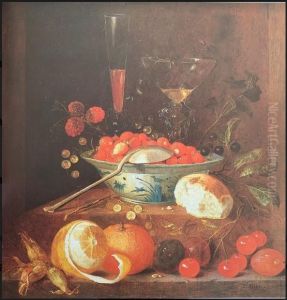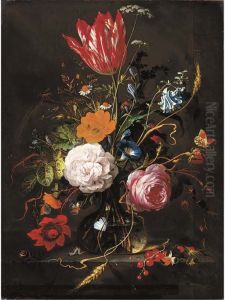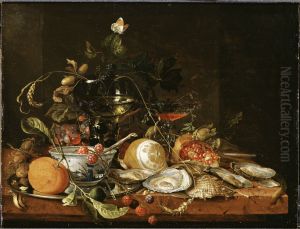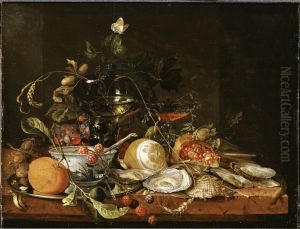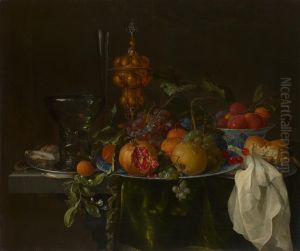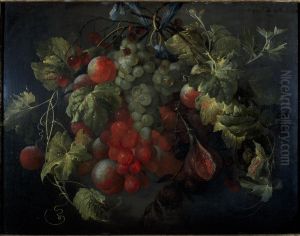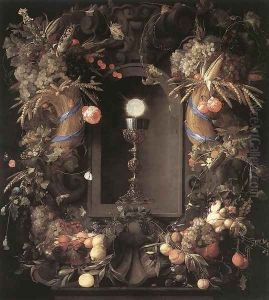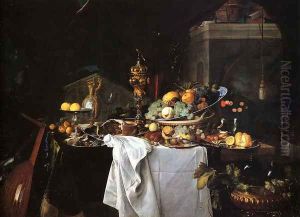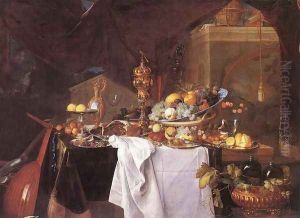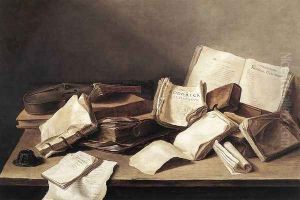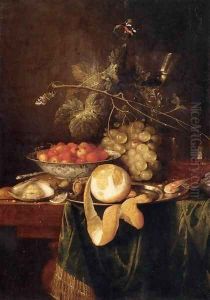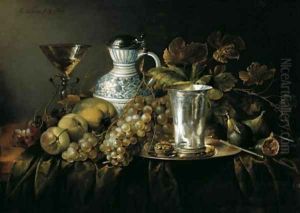Jan Davidsz. De Heem Paintings
Jan Davidsz. de Heem was a prominent Dutch still-life painter who was born in Utrecht, Netherlands, in 1606. He is particularly known for his intricate and vibrant compositions of flowers and fruits, often imbued with a sense of baroque exuberance and meticulous attention to detail. De Heem's work reflects the Dutch Golden Age's fascination with the natural world and the genre of still-life painting, which was used to convey moral messages, as well as to showcase the artist's technical skill and the wealth of patrons.
De Heem began his artistic training with his father, David de Heem the Elder, who was also a painter, though of less renown. Afterward, Jan moved to Leiden around 1625, where he was influenced by the earlier still-life painters such as Balthasar van der Ast. His early works were mostly monochromatic banketjes (banquet pieces) which showed his continuous development in the genre. By the 1630s, De Heem's style evolved, and he started incorporating more color and light into his paintings, influenced by the Flemish Baroque style.
Around 1636, Jan Davidsz. de Heem moved to Antwerp, which was then a major center for art and commerce. His work gained widespread recognition, and he became a member of the Saint Luke's guild. It was here that he produced some of his most celebrated works, which often featured opulent displays of fruit, flowers, and objects that conveyed vanitas themes—a reminder of the transience of life and the futility of pleasure.
Jan Davidsz. de Heem's paintings are characterized by their vivid colors, the play of light and shadow, and their elaborate composition. His masterful technique in depicting materials and textures made his paintings highly sought after during his lifetime and they continue to be highly regarded. He also had a significant influence on other still-life painters of his time and later periods.
Despite his success in Antwerp, De Heem returned to Utrecht in 1667 due to the disruptions of the Franco-Dutch War. He continued to paint and maintain his fame until his later years. Jan Davidsz. de Heem died in 1684, leaving behind a rich legacy as one of the greatest still-life painters of the Dutch Golden Age. His works are held in many prestigious museums around the world and continue to be studied and admired for their beauty and historical value.
